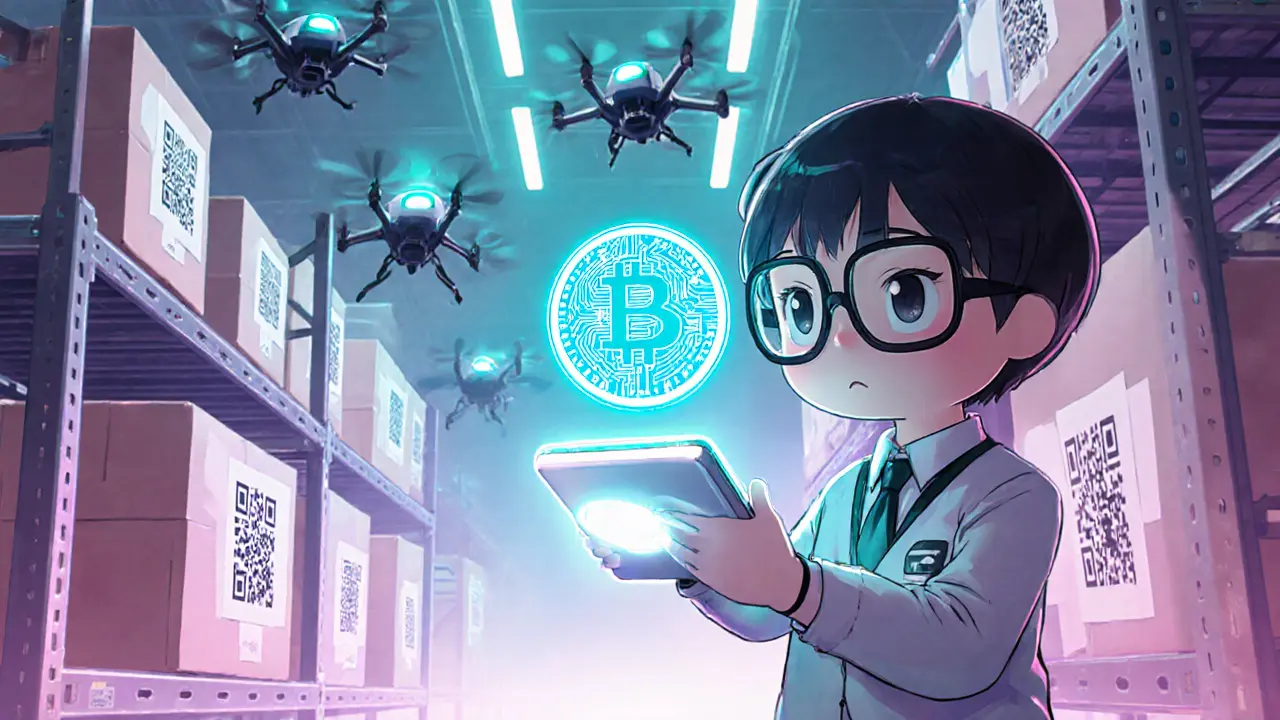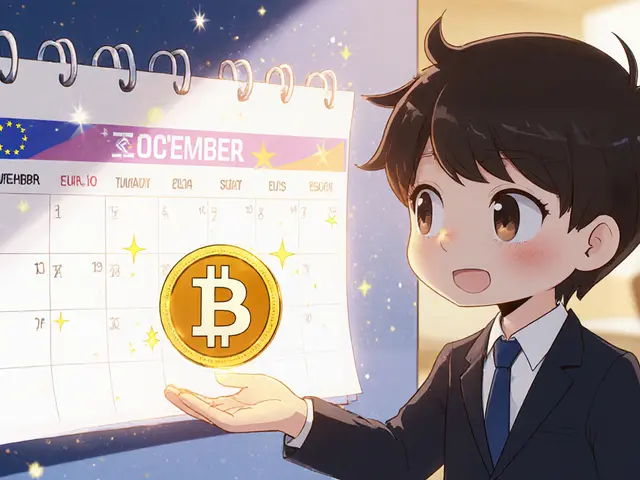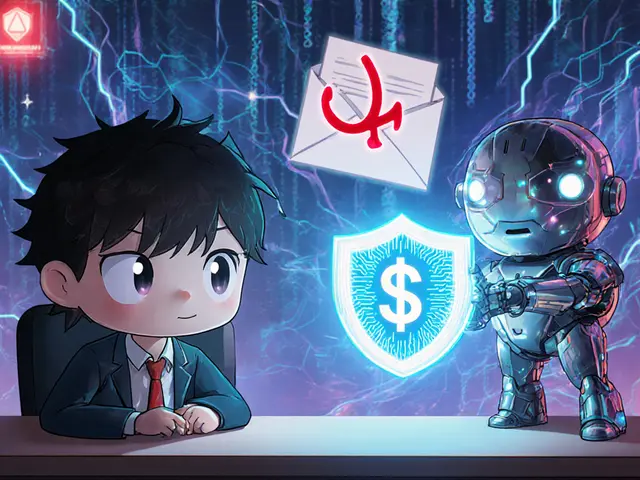Supply Chain NFT Adoption Challenge Calculator
Recommended Mitigation Strategy
Estimated Impact
Implementation Timeline
Challenge Categories Overview
Technical
Integration, scalability, data quality issues
Organizational
Partnership alignment, change resistance
Regulatory
Compliance uncertainty, cross-border issues
Cost
Upfront investment vs. ROI timing
Data Quality
Accuracy and governance concerns
When companies talk about Supply Chain NFT is a unique digital token that records product provenance, ownership, and movement across the supply chain on a blockchain, they often overlook the hurdles that can stall a project. supply chain NFT promises immutable records and instant verification, but turning that promise into reality means wrestling with technology, people, and law.
What a Supply Chain NFT Actually Looks Like
At its core, a blockchain distributed ledger that stores transaction data in a tamper‑proof way acts as the backbone. Each token carries metadata - material type, factory location, shipping route, and even a QR code that consumers can scan to see the full journey. In a limited‑edition sneaker rollout, for example, the NFT held details about leather source, stitching patterns, and the exact port of entry, letting buyers verify authenticity with a single phone scan.
Technical Hurdles that Bite Hard
Integrating blockchain with legacy ERP, WMS, or customs systems is rarely a plug‑and‑play job. Companies report that roughly 30% struggle to achieve basic interoperability, often because their existing software runs on closed, proprietary protocols. The lack of standardized data models forces each partner to build custom adapters, inflating both time and cost.
- Interoperability: Different blockchain networks (Ethereum, Hyperledger, Tezos) speak different languages. Without a common bridge, data silos persist.
- Scalability: Public chains can process only a few dozen transactions per second. High‑volume logistics streams may choke, requiring costly layer‑2 solutions.
- Data Quality: Garbage‑in, garbage‑out applies. If factories upload incorrect batch numbers, the NFT will faithfully preserve the error.
Even when the tech fits, the workforce must learn new skills. A 2022 McKinsey study showed firms that invested in upskilling saw productivity gains of up to 30%, but the upfront training budget can eat into already tight margins.
Organizational Roadblocks: Getting Everyone on Board
The supply chain is a multi‑party ecosystem. A successful NFT rollout needs consensus among suppliers, manufacturers, freight forwarders, customs agencies, and retailers. Achieving that consensus is a political exercise as much as a technical one.
Key pain points include:
- Cost allocation - who pays for the blockchain nodes, smart‑contract development, and ongoing maintenance?
- Governance - how are disputes settled when an NFT claims a product is counterfeit?
- Change resistance - many logistics providers still rely on paper bills of lading and have little incentive to digitize.
Without a clear value‑sharing model, smaller partners may simply opt out, leaving the network fragmented.
Regulatory Uncertainty Across Borders
Unlike financial crypto assets, NFTs used for operations sit in a gray zone of law. Few jurisdictions have explicit guidelines for non‑financial blockchain use. This creates two major headaches:
- Regulatory compliance ensuring that blockchain activities meet local legal requirements such as data protection and customs reporting becomes a moving target as rules evolve.
- Cross‑border shipments must reconcile divergent standards. A token accepted in Europe may trigger extra reporting in Asia, complicating the “one‑token‑fits‑all” vision.
Academic research from Hong Kong University institution that published a study on blockchain adoption barriers in supply chains highlights that regulatory ambiguity ranks among the top three blockers, alongside technology and organizational culture.
Cost Realities: Up‑Front Investment vs. Long‑Term ROI
Initial spend can be steep. Building a custom NFT platform, training staff, and integrating with existing IT stacks can push budgets past $2million for mid‑size manufacturers. Smaller firms often cite this expense as a show‑stopper.
However, the upside is tangible. Blockchain‑enabled finance solutions have cut operational costs by up to 33% in some pilot programs, and companies that achieve high‑performance supply chains report a 79% boost in customer satisfaction. The question is whether the early‑stage costs can be amortized before cash‑flow pressures bite.

Sector‑Specific Success Stories and Their Limits
Recycling industries have been early adopters. By attaching NFTs to batches of reclaimed plastic, firms can prove compliance with environmental regulations and demonstrate “green” credentials to buyers. The transparency has reduced audit times by 40% in several European municipalities.
In contrast, fast‑moving consumer goods (FMCG) face tighter margins and faster product turnover. The relative ROI for an FMCG brand may take five years to materialize, a timeline many executives find unacceptable.
Practical Mitigation Strategies
To move past the stumbling blocks, practitioners are trialing a handful of tactics:
- Start Small, Scale Fast: Pilot NFTs on high‑value or regulated items (luxury goods, pharmaceuticals) before expanding to bulk commodities.
- Leverage Consortium Blockchains: Joining industry‑wide networks (e.g., a logistics platform backed by multiple carriers) spreads cost and creates shared standards.
- Adopt Open Standards: Emerging protocols like GS1 Digital Link map physical barcodes to blockchain identifiers, easing integration.
- Engage Regulators Early: Co‑creating pilot frameworks with customs agencies builds trust and clarifies reporting obligations.
- Use Hybrid Models: Keep sensitive data off‑chain while storing hash pointers on the blockchain, balancing privacy with transparency.
These approaches have helped the National Foreign Trade Council organization that surveyed supply chain challenges in 2025 members reduce project delays by an average of three months.
Future Outlook: Will the Challenges Fade?
Investment in blockchain for supply chain work is projected to exceed $11billion in 2025, and the number of blockchain‑powered logistics platforms grew 30% year‑over‑year last year. That momentum suggests the ecosystem is maturing.
Yet, without coordinated standards, a unified regulatory framework, and clear business cases for smaller players, adoption will likely remain limited to niche segments. The technology’s long‑term viability hinges on hitting a critical mass where network effects outweigh the hefty upfront spend.
Quick Reference Checklist
| Challenge Category | Typical Impact | Suggested Mitigation |
|---|---|---|
| Technical Interoperability | Integration delays, increased IT spend | Adopt open standards (GS1 Digital Link), use consortium blockchains |
| Organizational Buy‑In | Partner disengagement, fragmented data | Start with high‑value pilots, share cost models transparently |
| Regulatory Uncertainty | Legal risk, compliance overhead | Engage regulators early, employ hybrid on/off‑chain data storage |
| Cost & ROI | Budget overruns, delayed payback | Leverage shared infrastructure, quantify efficiency gains (e.g., 30% cost cut in finance) |
| Data Quality | Incorrect provenance, lost trust | Implement strict data governance, automate capture at source |
Next Steps for Your Organization
If you’re considering a supply chain NFT project, follow this three‑phase roadmap:
- Discovery: Map current data flows, identify high‑value product lines, and assess partner readiness.
- Prototype: Build a minimal‑viable token for a single SKU, integrate with one ERP module, and run a controlled shipment.
- Scale: Evaluate pilot metrics (traceability latency, cost per token, partner feedback) and expand to additional SKUs or regions.
Throughout, keep a cross‑functional steering committee that includes legal, IT, procurement, and a senior supply‑chain leader. Their oversight will smooth governance and keep the project aligned with business goals.
Frequently Asked Questions
What makes a supply chain NFT different from a regular barcode?
A barcode stores static data that can be altered or duplicated. An NFT lives on a blockchain, so the metadata (origin, ownership, journey) is immutable and publicly verifiable.
Do I need a public blockchain for NFTs?
Not necessarily. Private or permissioned blockchains (e.g., Hyperledger Fabric) can host NFTs while offering better control over privacy and performance.
How much does a pilot implementation typically cost?
Costs vary widely, but a modest pilot for a single product line often falls between $250,000 and $500,000, covering development, integration, and training.
Which industries are seeing the fastest adoption?
Luxury goods, pharmaceuticals, and recycling sectors lead the way because they need strong provenance and regulatory proof points.
What regulatory trends should I watch?
European Union’s Digital Identity framework and emerging U.S. guidance on non‑financial blockchain use are shaping how NFTs can be deployed in supply chains.







Parker Dixon
September 20, 2025 AT 06:40Great breakdown! 🎉 The open‑source standards like GS1 Digital Link really can cut integration headaches, and pilot programs on high‑value SKUs give quick wins. If you pair that with a cross‑functional steering committee you’ll keep everyone aligned and avoid the classic silo trap. Also, consider using a permissioned ledger for the first phase – it reduces cost and regulatory friction while you prove the model. 🙌
celester Johnson
September 20, 2025 AT 21:57While optimism is charming, the reality is that most firms underestimate the entropy introduced by adding another immutable layer. The blockchain illusion of trust merely masks governance deficits, and without a robust dispute resolution framework, the system becomes a glorified ledger of disagreements. In essence, NFT provenance is a philosophical mirage if the underlying processes remain opaque.
Prince Chaudhary
September 21, 2025 AT 13:13The roadmap you outlined makes sense, especially the emphasis on mapping data flows before any code is written. By identifying high‑value product lines early you create tangible ROI that can convince skeptical partners. A clear governance charter will also prevent the “who pays for the nodes?” dilemma that often stalls projects.
John Kinh
September 22, 2025 AT 04:30Sounds like extra paperwork for no real benefit.
Nathan Blades
September 22, 2025 AT 19:47When you look at the big picture, the promise of NFTs in supply chains is more than just a digital sticker. It’s about creating a single source of truth that can survive audits, recalls, and even legal disputes. The technical stack, however, needs to be built on open APIs so legacy ERP systems don’t become dead‑ends. Think about modular smart contracts that can be swapped out as standards evolve – that’s a safeguard against vendor lock‑in. On the people side, change agents must be empowered with clear KPIs; otherwise the pilot fizzles out. Training isn’t just a one‑off workshop; it should be embedded in onboarding for new hires. Also, leverage consortium blockchains to share infrastructure costs and accelerate network effects. Finally, keep an eye on emerging regulatory guidances so you can adapt before compliance becomes a blocker.
Somesh Nikam
September 23, 2025 AT 11:03Excellent points! 👏 I’d add that establishing strict data governance policies at the point of capture can dramatically improve the trustworthiness of the NFT metadata. Automating validation checks before data hits the ledger cuts down on “garbage‑in” scenarios. Regular audit loops will also reassure partners that the system remains clean.
MARLIN RIVERA
September 24, 2025 AT 02:20The whole NFT hype is a distraction from the real issues – inefficiency, poor forecasting, and human error. Throwing blockchain at a problem you don’t understand only creates a veneer of innovation while the underlying processes stay broken.
Debby Haime
September 24, 2025 AT 17:37Let’s keep the momentum going! 🚀 If you frame the pilot as a “battle‑won‑in‑minutes” experiment, stakeholders will get excited to see results, and you’ll gather data to refine the next phase.
emmanuel omari
September 25, 2025 AT 08:53From a national standpoint, we can’t afford to rely on foreign blockchain platforms that might be subject to external control. Building a sovereign, domestically‑governed ledger ensures data sovereignty and aligns with our strategic interests.
Andy Cox
September 26, 2025 AT 00:10interesting take on the cost side it definitely feels like a big up front but the long term savings could be real
Courtney Winq-Microblading
September 26, 2025 AT 15:27One could argue that the NFT is the modern alchemy of trust, transmuting raw data into immutable gold. Yet, if the base metals – the processes – are flawed, the resulting alloy will still be brittle.
katie littlewood
September 27, 2025 AT 06:43Reading through the exhaustive breakdown, I am struck by how many of the challenges echo age‑old supply‑chain woes, only now dressed in blockchain jargon. The technical interoperability hurdle, for instance, is essentially the same as the integration nightmare we have wrestled with ever since ERP systems first appeared. What changes is that the data now sits on an immutable ledger, which magnifies the pain of any mis‑alignment because you cannot simply delete or edit a record. Consequently, the emphasis on open standards such as GS1 Digital Link becomes not a nice‑to‑have but a prerequisite for any realistic deployment. Equally important is the human factor; without a cross‑functional steering committee, you will soon find yourself mediating endless disputes over who owns the token. From an organizational buy‑in perspective, starting with a high‑value, low‑volume pilot – perhaps a luxury watch or a pharmaceutical batch – gives you a tangible success story to showcase. Such a pilot should be framed with clear metrics: reduction in verification time, percentage decrease in counterfeit reports, and total cost of ownership over a twelve‑month horizon. When the numbers start to speak, even the most skeptical partners will begin to see value, and the cost‑allocation discussion becomes a conversation about shared upside rather than a zero‑sum game. Regulatory uncertainty, while a formidable beast, can be tamed by engaging customs agencies early and proposing a hybrid on‑chain/off‑chain model that respects data‑privacy laws. In many jurisdictions, the law still lags behind technology, so a proactive partnership with regulators not only mitigates risk but can position your firm as a standard‑setting leader. Cost, of course, remains the elephant in the room; however, leveraging consortium blockchains spreads the infrastructure expense across multiple industry players, turning a sunk cost into a shared investment. Moreover, the anticipated ROI-be it through faster finance reconciliations, reduced audit cycles, or enhanced brand trust-should be quantified early to convince the CFO. Data quality cannot be overstated; implementing automated capture at the source and embedding validation checkpoints ensures that the NFT metadata reflects reality rather than a copy‑paste error. Finally, the timeline outlined in the calculator-three to six months for initial setup, twelve to eighteen months for full optimization-matches well with typical digital transformation roadmaps, making it a realistic target. In summary, the path forward is a balanced blend of technology, governance, and stakeholder engagement, and if executed with discipline, the promise of supply‑chain NFTs can finally move from hype to hard‑won advantage.
Jenae Lawler
September 27, 2025 AT 22:00It is incumbent upon us to recognize that the purported efficiencies of blockchain‑based NFTs are, at present, more speculative than demonstrable. The extant literature provides scant empirical evidence to substantiate the claimed reductions in operational expenditure. Consequently, any large‑scale deployment must be predicated upon rigorous, peer‑reviewed pilot data rather than anecdotal success stories.
Chad Fraser
September 28, 2025 AT 13:17Yo, love the practical steps! If you keep the pilots tight and celebrate the quick wins, the whole crew will stay pumped and the roll‑out will feel like a natural progression.
Jayne McCann
September 29, 2025 AT 04:33All that buzz sounds overblown to me.
Richard Herman
September 29, 2025 AT 19:50I see merit in both the optimistic projections and the cautious warnings. Bridging the gap with transparent data sharing and incremental pilots could satisfy both camps.
Jan B.
September 30, 2025 AT 11:07Looks solid; clear governance and data checks will help avoid messes.
Stefano Benny
October 1, 2025 AT 02:23From a techno‑strategic viewpoint, the tokenization model is just a layer‑2 abstraction that adds latency without delivering true synergies; you’d be better off optimizing existing EDI pipelines.
Bobby Ferew
October 1, 2025 AT 17:40Sure, the roadmap sounds nice on paper, but we all know how these “pilot” promises evaporate once the real budget crunch hits.
Mark Camden
October 2, 2025 AT 08:57It is ethically untenable to pursue a technology that could exacerbate data monopolies without a robust framework for equitable access; we must demand stronger oversight before moving forward.
Evie View
October 3, 2025 AT 00:13Honestly, the whole NFT hype is just a distraction from the real supply‑chain problems that need urgent action.
Sidharth Praveen
October 3, 2025 AT 15:30Keep pushing forward; even small improvements in traceability can build momentum for larger transformations down the line.
Sophie Sturdevant
October 4, 2025 AT 06:47Leverage the consortium blockchain’s shared ledger capabilities to spread costs and accelerate network effects; this will help you achieve measurable KPI improvements faster.
Kate Roberge
October 4, 2025 AT 22:03Look, if you’re not already seeing ROI in the first quarter, you’re probably just chasing a shiny new toy.